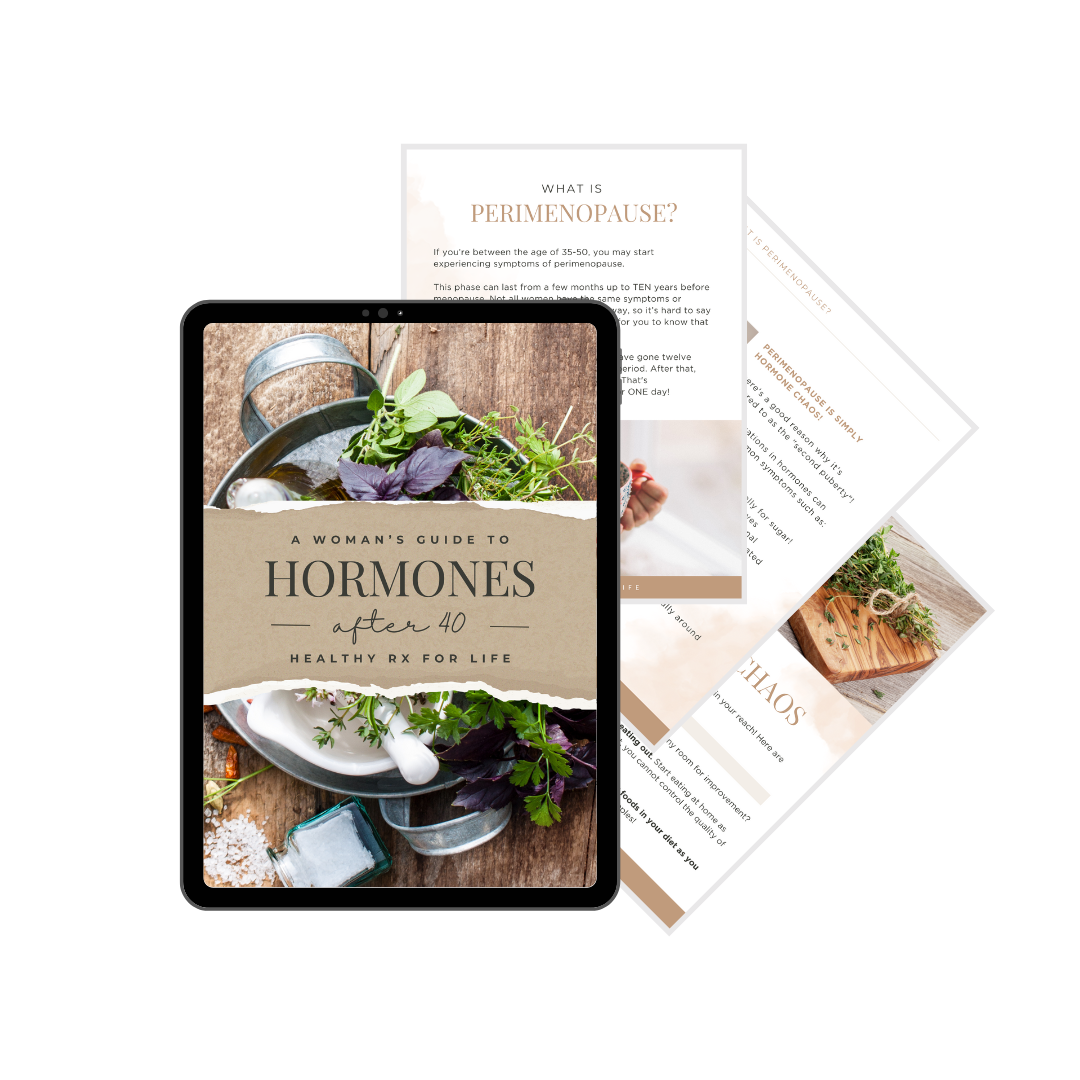Most women in perimenopause think that if they don’t have type 2 diabetes, they don’t have to worry about their blood sugar.
But that’s not actually true!
Have you ever heard of insulin resistance?
Insulin resistance develops years (sometimes even a decade!) before blood sugar is ever high enough for a diagnosis of type 2 diabetes.
Luckily, with some simple yet sustainable lifestyle upgrades, insulin resistance can be reversed.
What is insulin resistance?
Insulin resistance is when cells in your muscles, fat, and liver don’t respond well to insulin (the hormone that allows sugar to enter cells).
That means sugar cannot effectively enter the cells to be burned for energy.
Which also means blood sugar can start to creep higher, especially after eating carbohydrates or sweets.
Insulin resistance is usually present in prediabetes and can eventually lead to type 2 diabetes, but it can exist long before a diabetes diagnosis. The trickiest part?
There usually are no obvious symptoms.
But there are some subtle clues that are commonly associated with insulin resistance.
What are some signs of insulin resistance?
Abdominal Weight Gain
Insulin is a fat storing hormone, triggering the conversion of sugar into fat. However, there is a difference between subcutaneous fat (fat located under the skin – typically around the hips, arms and thighs), and visceral fat (fat that develops around the organs of the abdomen). Visceral fat is much more dangerous as it can increase the risk of type 2 diabetes, heart disease, and stroke.
Sugar & Carb Cravings
Insulin resistance can cause excessive hunger and fatigue, which triggers the consumption of refined carbohydrates (aka sugar!) for an immediate source of energy.
Crashing After Eating Sweets
This frequently occurs during the early stages of insulin resistance, when the pancreas pumps out more insulin than needed to move sugar out of the blood and into the cells to be used for energy. This can lower the blood sugar too much, causing a sugar crash.
What are the root causes of insulin resistance?
Visceral Fat
Fat that builds up around the internal organs (instead of just under the skin) is called visceral fat. The fat cells in visceral fat release hormones and inflammatory chemicals that drive insulin resistance. The biggest outward clue that visceral fat exists is an increase in waist size. As you navigate perimenopause, it’s important to monitor your waist-to-hip ratio.
Mitochondrial Dysfunction
Mitochondria are the powerhouses of cells. They are the place where sugars and other macronutrients are transformed into energy. Mitochondrial dysfunction means that cells cannot burn sugar as well. Mitochondria are highly susceptible to damage from free radicals and toxins, so we can protect them by loading up on antioxidants and supporting detoxification.
Inflammation
Obesity is associated with a state of low-grade inflammation, which can even affect parts of the brain that produce leptin, the hormone that makes you feel full. If inflammation leads to leptin resistance, then you might consume more sugar than the body can handle – without feeling full.
How can you reverse insulin resistance?
Lose Weight
Being overweight or obese is associated with multiple changes in the body (including inflammation and leptin resistance) that contribute to or worsen insulin resistance. Studies show that weight loss is one of the best ways to reverse insulin resistance.
Exercise
Exercise not only burns energy in the moment to help regulate blood sugar levels but also builds muscle. Muscle cells more effectively burn sugar than fat cells, even at rest. Regular exercise – strength training in particular – is essential to reversing insulin resistance.
Get Quality Sleep
Didn’t think of this one, did you? Sleep deprivation is a risk factor for increased blood sugar levels, and even one night of a lack of sleep can worsen insulin resistance.
Live Clean
Minimizing your exposure to toxins supports cellular health. Some pesticides increase the risk of type 2 diabetes, and many synthetic chemicals are known to be endocrine disruptors that may contribute to insulin resistance.
Eat for Blood Sugar Balance
The foods you eat have a dramatic effect on blood sugar levels. You can slow the digestion and absorption of sugars from your food by combining carbohydrates with fats, fiber, and protein.
The bottom line?
Insulin resistance develops YEARS before a diagnosis of type 2 diabetes.
But are you ready for the good news?
Insulin resistance is reversible.
Type 2 diabetes is commonly diagnosed around the time of menopause, which means the subtle signs of insulin resistance begin to appear in perimenopause.
That also means that as a woman in perimenopause, the time to act is NOW.
But don’t worry, you’re not in this alone! I work with women every day to reverse insulin resistance. Book a Custom Hormone Consult and let me help you write YOUR Healthy Rx for Life!






